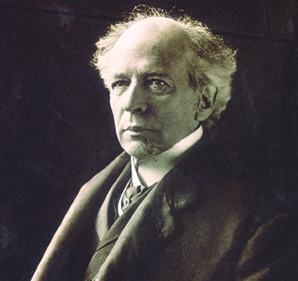If on a lark you decided to assemble a scholarly biography of every significant Canadian to have trod these shores since the year 1000, how long would it take? As far as we can say empirically, you’d want to set aside a half-century, to begin with.
It has, in fact, been exactly 50 years since the editors of the Dictionary of Canadian Biography embarked on this quest. Over the decades, they have methodically created more than 8,400 alphabetized biographies – from Aatsista-Mahkan (the 19th century Blackfoot chief ) to Sebastian Zouberbuhler (an early magistrate of Lunenburg). The work comprises 15 volumes, covering Canadians who died before 1931. The 16th volume will span the years 1931-40.
The dictionary’s editors begin each volume – which covers one decade and can take as long as seven years to produce – by compiling a list of notable deaths for that period. The editors then whittle this down to between 500 and 700 names. The articles, written by historians, range in length from 1,000 to 15,000 words.
As the study of history itself has changed over the past several decades, so has the dictionary’s composition. As social history, which emphasizes larger trends over “great men,” became more prevalent, the DCB began to focus less on military, religious and political leaders, and more on journalists, athletes and cultural figures.
The DCB’s editors have included articles about Canada’s first seven prime ministers, of course, but they have also sought out not-so-famous Canadians who can help flesh out a fuller picture of the country’s past. “The people we write about have to have set foot in Canada, and they have to be dead. And that’s it,” says Robert Fraser, who oversees the DCB’s daily operations.
Fraser – who’s been with the project since 1976, when he was a U of T doctoral student – rattles off some personal favourites: Richard Pierpoint, a West African taken as a British slave who fought as a free Loyalist in the American Revolution, raised a corps of black soldiers to fight in the War of 1812 and later became one of the first to settle near Fergus, Ontario. Or Peter Kerrivan, a storied Robin Hood–like figure from Newfoundland who appears to have been more legend than real.
The DCB was set in motion by James Nicholson, a successful Toronto birdseed manufacturer with a fondness for the U.K.’s Dictionary of National Biography. Believing that Canada deserved a national biography of its own, Nicholson bequeathed the bulk of his estate to U of T to create one. The project officially got underway in 1959.
“Biography seems to be a way to approach the Canadian past that’s no longer quite so fashionable with historians, but it’s definitely of interest to the general public,” notes John English, the current general editor. English estimates that the project should reach 1970 by the 2020s. By that time, Nicholson, the dictionary’s founder, might have his own biography included. Not bad for long-term thinking.
Recent Posts
U of T’s Feminist Sports Club Is Here to Bend the Rules
The group invites non-athletes to try their hand at games like dodgeball and basketball in a fun – and distinctly supportive – atmosphere
From Mental Health Studies to Michelin Guide
U of T Scarborough alum Ambica Jain’s unexpected path to restaurant success
A Blueprint for Global Prosperity
Researchers across U of T are banding together to help the United Nations meet its 17 sustainable development goals





